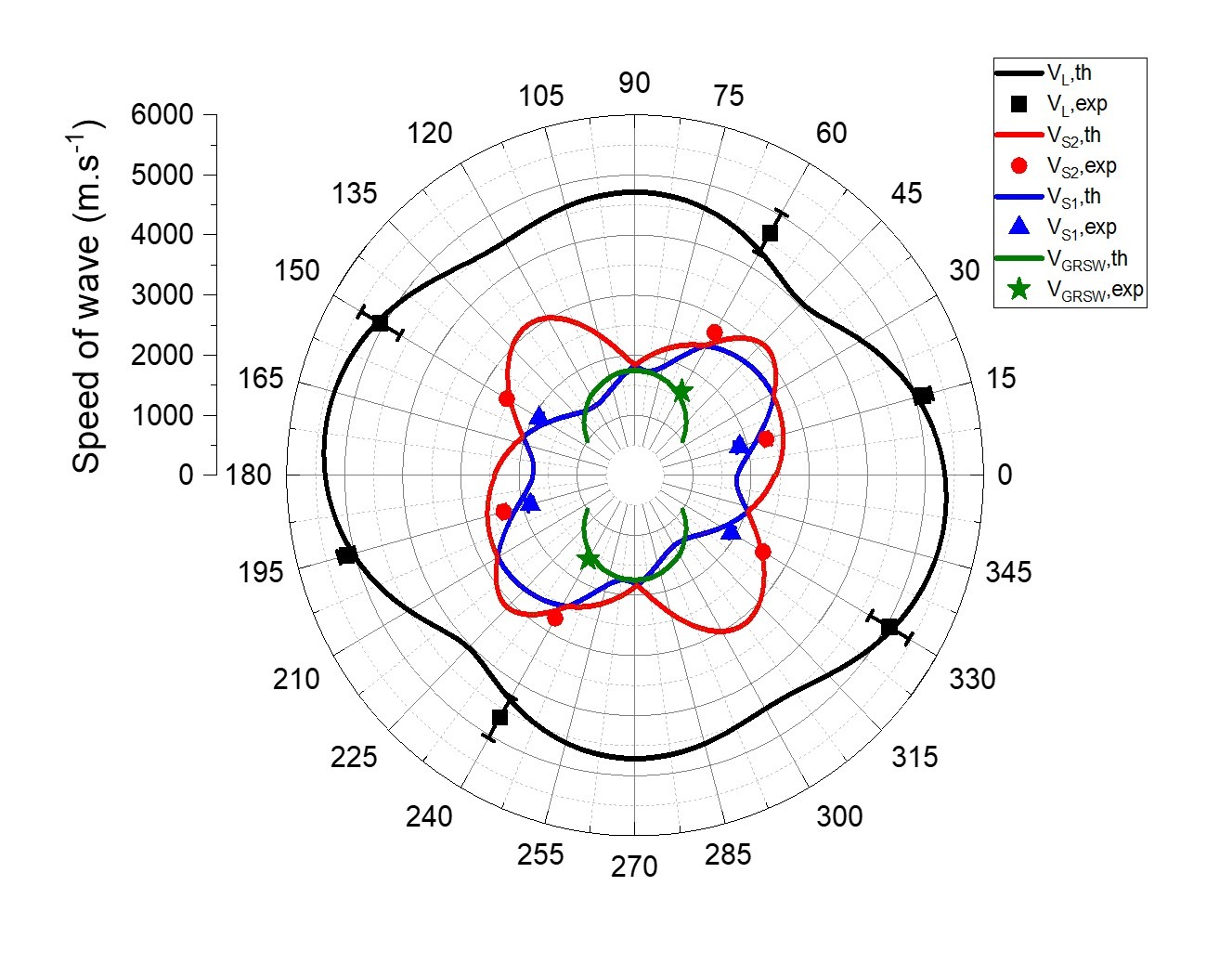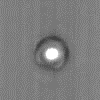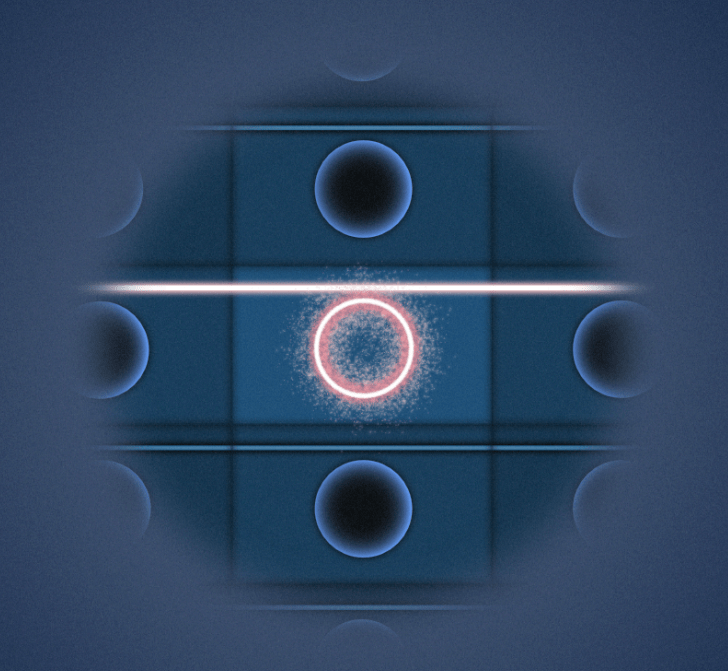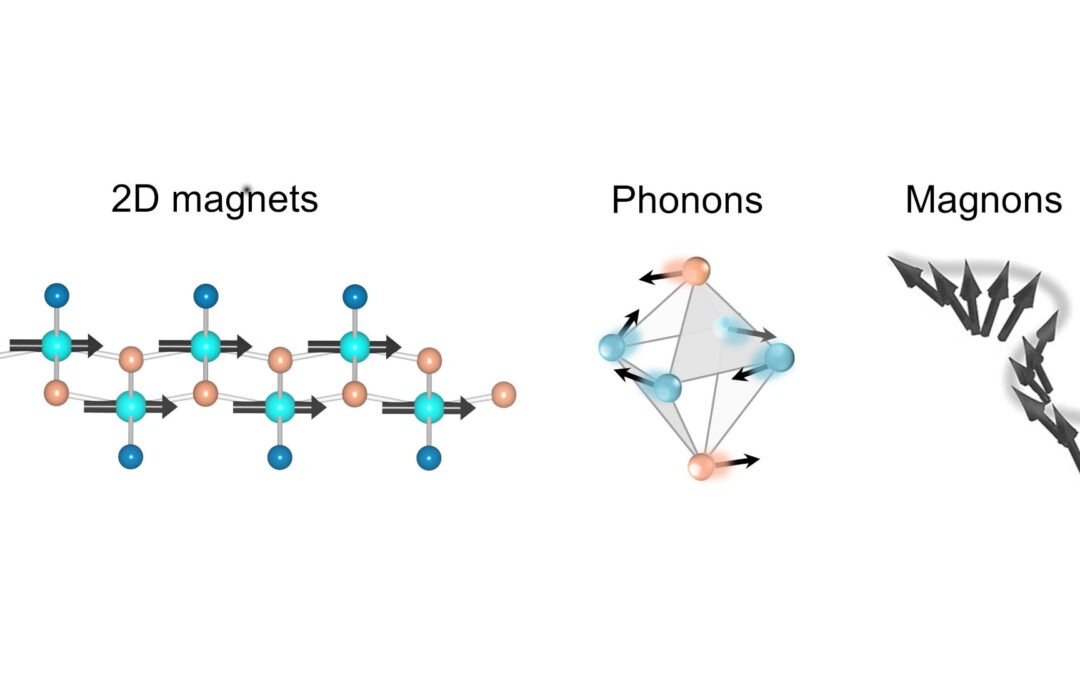Multiferroics are materials that simultaneously display a ferroelectric and a magnetic order, which in some cases interact. The combination of these properties holds promises for future hybrid computing architectures that transform information from one state into another, such as spin excitations into charge, phonons or photons.

Figure 1: Polar representation of the experimental (symbols) and calculated (lines) sound velocities of bulk and surface acoustic waves in a BFO crystal.

Figure 2: Animation showing the propagation of surface acoustic waves from the epicenter during the acoustic pump-probe experiment on a BFO crystal.
Among the various multiferroics, bismuth ferrite (BiFeO3) is a material with exceptional properties that develop at room temperature. It has demonstrated its applicative potential in nanoelectronics, photovoltaics, and for its photostriction properties with the development of optically triggered piezotransducers. However, despite being a very studied compound, the elastic properties of BiFeO3 (BFO), essential for the integration of this material into devices, remained incomplete.
To remedy this, the nanosciences acoustics team of INSP at Sorbonne University, the Process and Materials Sciences laboratory at Sorbonne Paris Nord University and the SQUAP team at the MPQ laboratory have determined all the elastic constants Cij of BFO.
For this, the researchers implemented a picosecond scale pump-probe experiment on a BFO single crystal to measure the sound speeds of acoustic waves. From a set of initial elastic constants calculated by Density Functional Theory, the resolution of the Christoffel equation gives access to the first theoretical speeds. The minimization of the difference between the experimental and theoretical speeds makes it possible to determine the six independent elastic constants Cij. Comparison of the directional dependence of experimental and theoretical sound speeds allows identifying the longitudinal, fast and slow transverse acoustic modes as well as the generalized Rayleigh surface wave.
Contact:
Maximilien Cazayous (maximilien.cazayous@u-paris.fr)
Reference:
Elastic properties assessment in the multiferroic BiFeO3 by pump and probe method, P. Hemme, P. Djemia, P. Rovillain, Y. Gallais, A. Sacuto, A. Forget, D. Colson, E. Charron, B. Perrin, L. Belliard, M. Cazayous, Appl. Phys. Lett. 118, 062902 (2021).
À lire aussi

TUPHO, for large-scale production of integrated photonic circuits
The TUPHO project is an initiative that aims to bridge the gap between upstream innovation and large-scale production in the integrated photonic circuits (PICs) industry. It is led by Hamidreza Neshasteh and Ivan Favero, members of the Light and Mechanics team at MPQ...

Towards light control of van der Waals magnets
Laboratoire: MPQ (Matériaux et Phénomènes Quantiques), Université Paris Cité & CNRS Adress: Bâtiment Condorcet – 10 Rue A. Domon et L. Duquet – 75013 Paris Internship/PhD supervisor: Niloufar Nilforoushan and Yann Gallais Tel: 0157276223 e-mail:...

Seminars
2025-2026 MPQ general seminar series organized by Niloufar Nilforoushan and Valentin Cambier Prof. Sebastian Loth — Institute for Functional Matter and Quantum Technologies, University of Stuttgart, GermanyTitle: Coming soonJan. 16, 2026 at 11:00 am — Salle Luc...

On-Chip Ferromagnetic Resonance for van der Waals Heterostructures: Anisotropy and Damping of Cobalt Interfaced with Exfoliated 2D Materials
A collaboration between the technical hub, the clean room platform and the TELEM group at MPQ laboratory has developped a new experiment demonstrating that standard broadband ferromagnetic resonance can still be effective to probe the magnetization dynamics of “thin...
